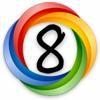
 |
Windows 8.1 FAQ |
1. What is Windows 8 User interface?
The new user interface that use's large app icons which is designed primarily for mobile devices such as Tablets and Mobile Phones like Windows Phone and Multitouch screens.
2. What is BitLocker?
Bitlocker is used to encrypt drive contents to prevent confidential data from being read from a thief if the PC or Laptop gets stolen. Ideally, it uses TPM (trusted platform module) 1.2 and as well as crypting programs and data and can encrypt hibernation and swap files as well. The drive can be locked unless and PIN number or USB driveis inserted with the correct keying information included on it.
3. What is Windows Smartscreen?
Smartscreen will warn or block unrecognised apps or programs from running and optionally only those approved by an administrator. This can potentially block harmful apps from running on Windows 8.
You can turn Smart Screen on or off in Control Panel, System and Security, Security and Maintenance, Security, Windows SmartScreen and click on Change Settings.
4. What is Hyper-V
Hyper-V (Hypervisor) replaces Virtual PC which allows you to run Virtual Machines on your computer. So, you can run Windows XP or Vista, 7 (32 or 64 bit) and so on, so that you can run legacy software that has not yet been updated for Windows 8. Hyper-V is available on Windows 8 64 bit Pro or Enterprise.
To install Hyper-V, open the Control Panel, select Programs and Features, Turn Windows Features on and off, and enable Hyper-V (Management tools and Platform). It can only be installed on a physical system. More information on Microsoft Docs.
5. What is UEFI and Hybrid Boot?
UEFI is the new Unified Extensible Firmware Interface which will eventually replaces BIOS for booting Windows systems.
Hybrid boot allows the PC to hibernate the Windows kernel on shutdown to speed up the subsequent boots.
6. What is in the new Task Manager?
Task Manager has been substantially updated with new Performance screen, an improved Application list with a more oricess moved to Details tab. Also has links to Resource Manager as well.
7. What is available in DirectX 11?
DirectX is Microsoft's API for graphics, sound and input systems for gaming
and multimedia. DirectX 11 now moves a lot of the processing from the CPU to
the GPU on the graphics card to improve performance of applications such as GPGPU (General Purpose computing on Graphics Processing Unit) support, Tessellation (tiles on a plane) support, and improved multi-processing support.
Windows 8 supports DirectX 9,10 and 11 to run older games using the older DirectX APIs so applications and games for Windows XP or later can run on Windows 8 (see Compatibility tab).
8. What is the Windows Store?
It is a store for users to purchase and download Windows 8 apps to install on their Windows 8 machines. It is accessible by pressing the Windows key or selecting the start menu on Windows 8.1. Apps are shown as tiles on the new Start window.
9. Can you image a Windows 8 computer?
Yes, you can use a new feature called DISM which can create WIM files which contains your OS image. Unlike, XP it is a lot more hardware independant, so you do not have to create multiple images due to different HALs or disk types. You can get DISM from the Windows Automated Deployment Kit from Microsoft Downloads page. If you have to deploy Windows 8 to multiple PCs, you can use the new WDS (Windows Deployment Services) on Windows Server 2008 R2 or 2012.
10. What has been removed or replaced in Windows 8?
The Backup and Restore tool has been replaced with the File History tool.
The Previous Versions tab in File Explorer no longer protects local files but it can still be used with Server shared files.
Windows Media Player and Media Center has been removed in the 'N' editions of Windows 8.
Windows Explorer is now named as File Explorer, it no longer has a traditional start menu, but now has a 'Ribbon' in the explorer window.
Windows Live Mail is replaced with the Mail app.
The Photo Gallery is replaced with the Photos app.
The Messenger program is replaced with the Skype app or program.